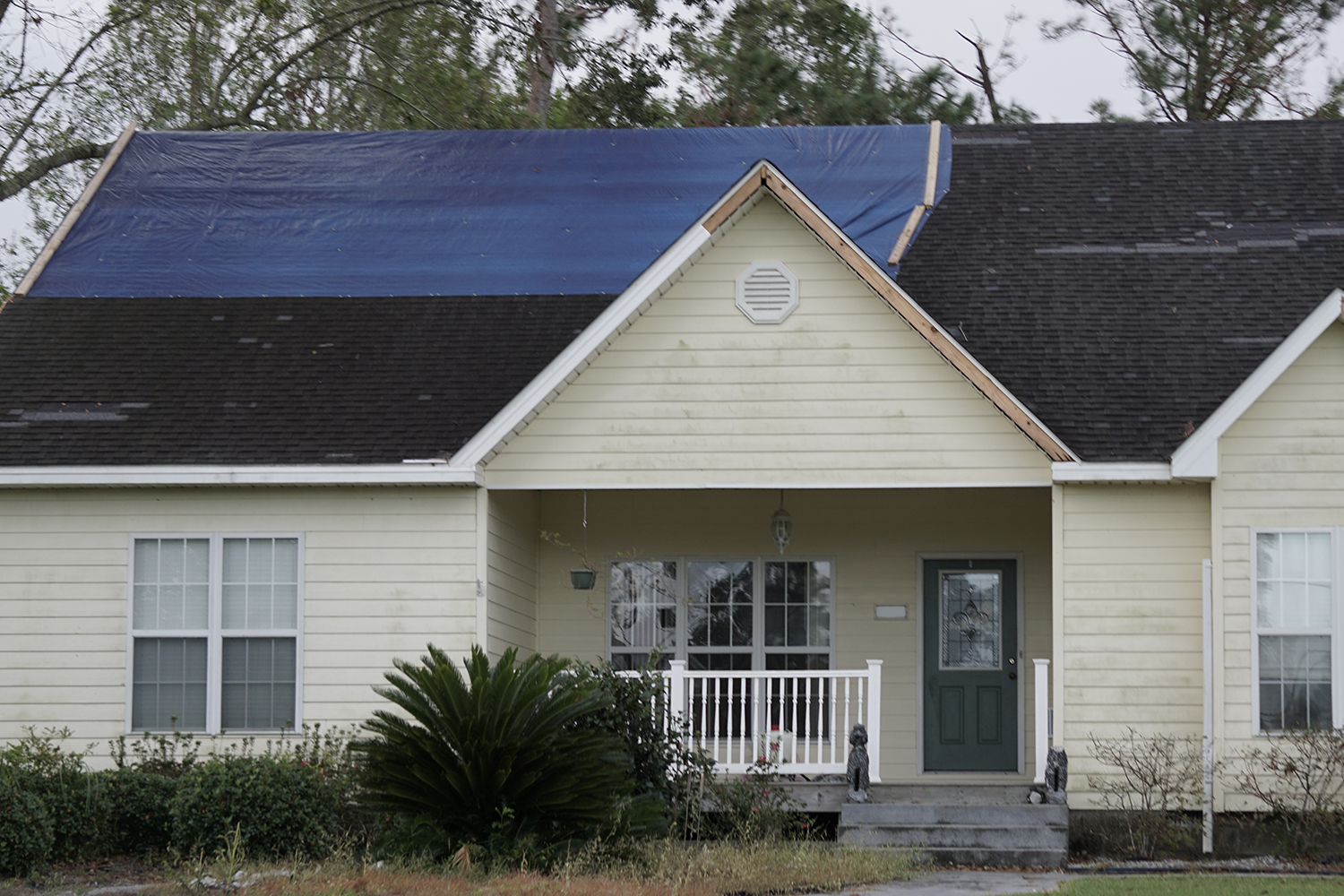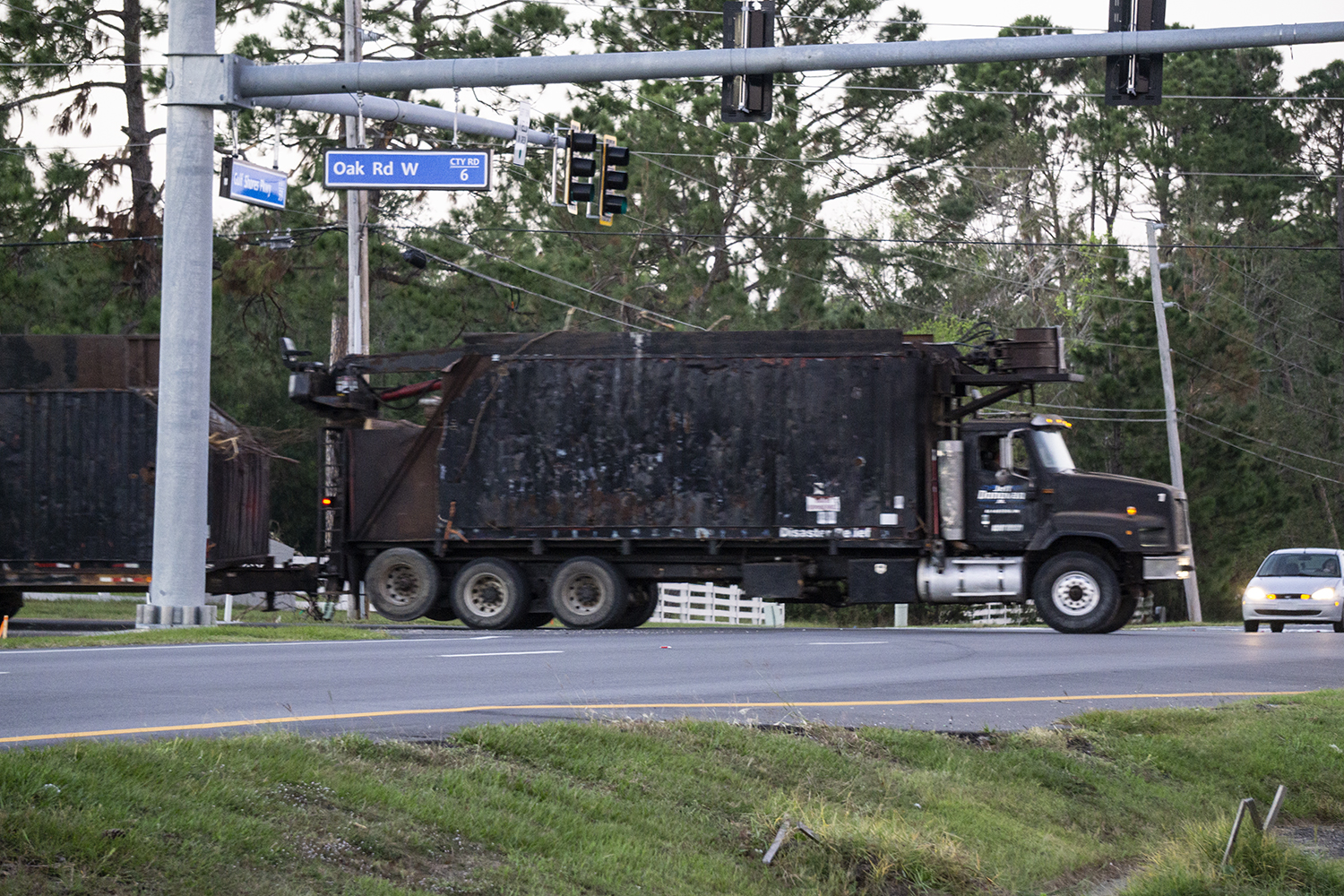Sally Strips Shingles Down by the Gulf Shores
Dear Readers,
Shelby and I are on a trip down South to visit a good friend. We are right next to the coastal waters in the state of Alabama. It’s a beautiful area and for us native Pennsylvanians, their October weather just feels like an extension of our summer – so we picked a good time to come down. However, as some of you may remember, the little bit of Alabama that touches the Gulf of Mexico was recently ravaged by Hurricane Sally, and it is obvious as you traverse through the area. Shelby and I very well know that Pennsylvania does not usually have to worry about hurricanes, but with our passion for building sustainable, healthy homes, we can’t help but wonder…what kind of damage is typical of hurricanes, and are there ways to prevent it?
As we continue to warm the planet, there are many side effects that we will be facing, and some of them are being felt already. The year 2020 is on track to produce the most named storms ever recorded. The last and only other time that we have used the Greek Alphabet to name Atlantic storms was in 2005. As of this writing, with still a month and a half left in the hurricane season, 2020 has nearly tied with 2005 due to the forming of storm Zeta. Although the amount of tropical storms we usually see every year has not increased, the strength and rapid intensification (a storm’s ability to grow in strength over a short period of time) of those storms has.1 We are seeing more named storms (storms with wind speeds of 75mph or greater) which, because they are warmer, are holding more water than we are used to.
Hurricane Sally made landfall in Gulf Shores, Alabama on September 16th, 2020 as a Category 2 hurricane. Although it was only a Category 2, it brought significant rain and flooding with it. As most may be aware, one of the biggest threats to a home is water. Water can rot or rust a structure, along with everything else in a building. It can also create mold and mildew and ruin the quality of a home’s interior air. Needless to say, if water gets into your home, then you’re probably left with a lot of damage and cleanup (and you better have good insurance or be wealthy). As Shelby and I have been touring through the Gulf Shores, the most damage we have noticed is to roofs. Roofs are either missing shingles, covered in tarps, hit with downed trees, or simply missing. Although this is the most visible damage, it’s obvious that this comes with the potential for plenty of water damage inside. Without a proper lid on your home, your home becomes a bucket.
A home in Gulf Shores, Alabama with a temporary covering
Even if a roof isn’t visibly damaged, excessive winds with driving rain and storm surge flooding can let plenty of water in. If a home isn’t really well built, and it doesn’t have an excellent weather resistive barrier or house wrap (the wrap that goes directly behind the siding), then some flooding or driving rains will easily work their way into the home and create thousands of dollars of damage. Many homeowners in the area are cleaning out their homes and placing large piles of ruined materials next to the street for massive trucks to come by and pick up. We were told that these trucks simply take all these materials to a landfill, or, they burn it.
A large trash truck drives through the Gulf Shores neighborhood to pick up piles of debris
To live sustainably on any coastline, a home should be able to withstand a major storm and lots of water. Most homes do not, and rarely is it required for a home to do so even when you live next to a beach. Home insurance may give you a break sometimes if you do certain things to your home, but it’s usually minimal. There is a certification that is voluntary that Shelby will talk about in our next blog about the Living Building that we got to tour on the beach, and some jurisdictions may have stringent local codes (like Miami-Dade County), but it usually doesn’t matter what you build. If it doesn’t matter what you build, the next hurricane that comes through will bring a lot of ruined homes, millions of dollars in damage, tons of trash, and thousands of homeowners without a place to stay. None of that seems very sustainable.
Within Gulf Shores, there were many who lived in “trailer homes” that owned their home and leased the land it was on (most trailer parks are modeled this way). The people who lived in homes that became unlivable after the hurricane (which is most of them) were forced by the landowners to leave because they wanted to bring in wealthier residents (get rid of the trailers and then jack up the price of the land). These people, along with everyone on the coastline (and everywhere) deserve quality, healthy, resilient homes that can be built affordably today. All we need is someone to build them.
Shelby and I will be keeping these lessons in mind as we design our own home and look at ways in which our home can withstand tough environments. If a building is to be truly sustainable, it should last for a very, very long time; and with the tumultuous climate we are headed for, resiliency needs to be planned for now.
Sincerely,
William Aldrich
1. Berardelli, Jeff. “How climate change is making hurricanes more dangerous,” Yale Climate Connections. 8 July 2019. https://yaleclimateconnections.org/2019/07/how-climate-change-is-making-hurricanes-more-dangerous/. Accessed on 26 Oct. 2020.
4 Comments
Submit a Comment
© 2020 Sustaining Tree
© 2020 Sustaining Tree



Maybe one day I could be that person to build those homes because you said, “‘All we need is someone to build them.'”
Hey Maryanna!!! 😀 Yes! And, maybe, if William and I get our little ‘pipe-dream’ of a business started, we can collaborate!
I thought you were going to suggest a ways to recycle these ruins that they burn into some building material !!
Ha, hey Granann! 😉 That would be awesome! We will have to research to see if anyone down South is indeed already doing that. It would be a great way to mitigate our carbon footprint. William and I are also investigating ways to stop the ‘ruin trash’ at its source…by simply building more weather resilient homes. THAT I know they are already doing down South. There is such a thing as a ‘Fortified Home’ certification: https://fortifiedhome.org/